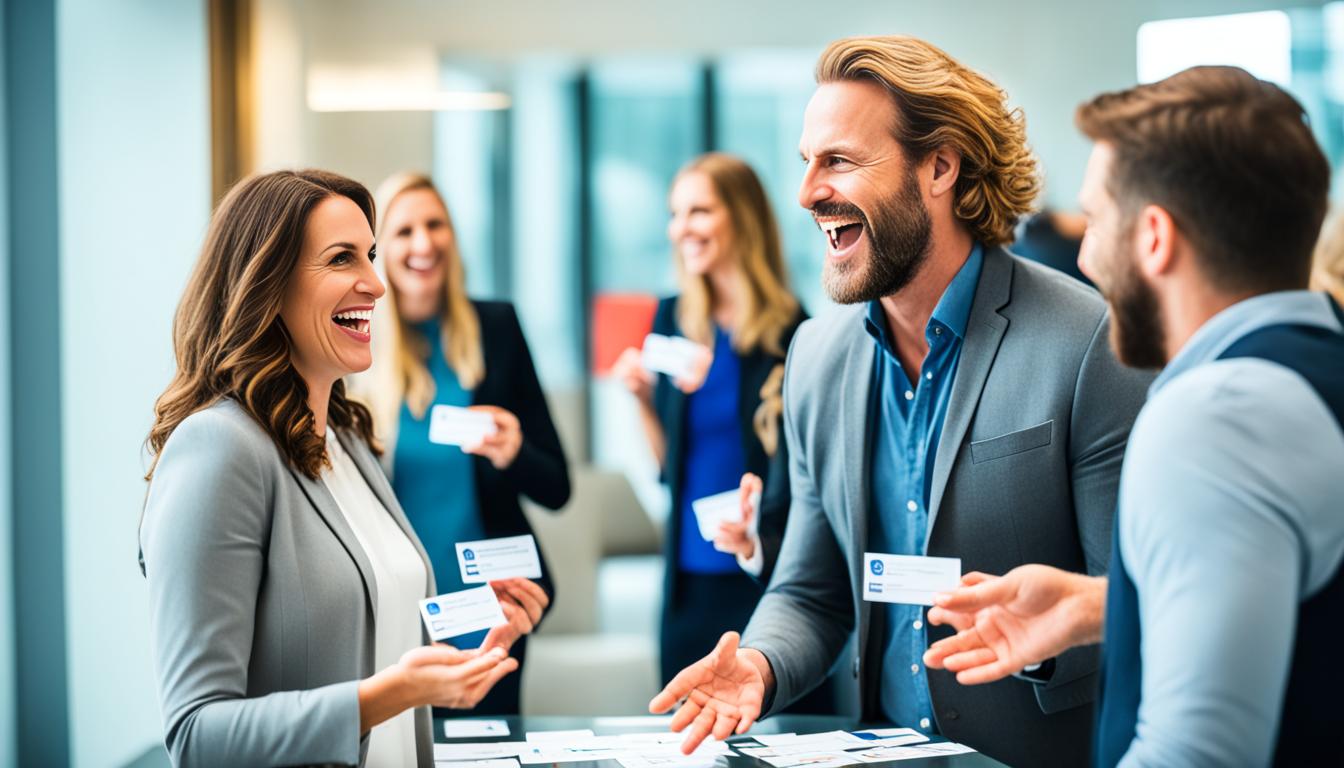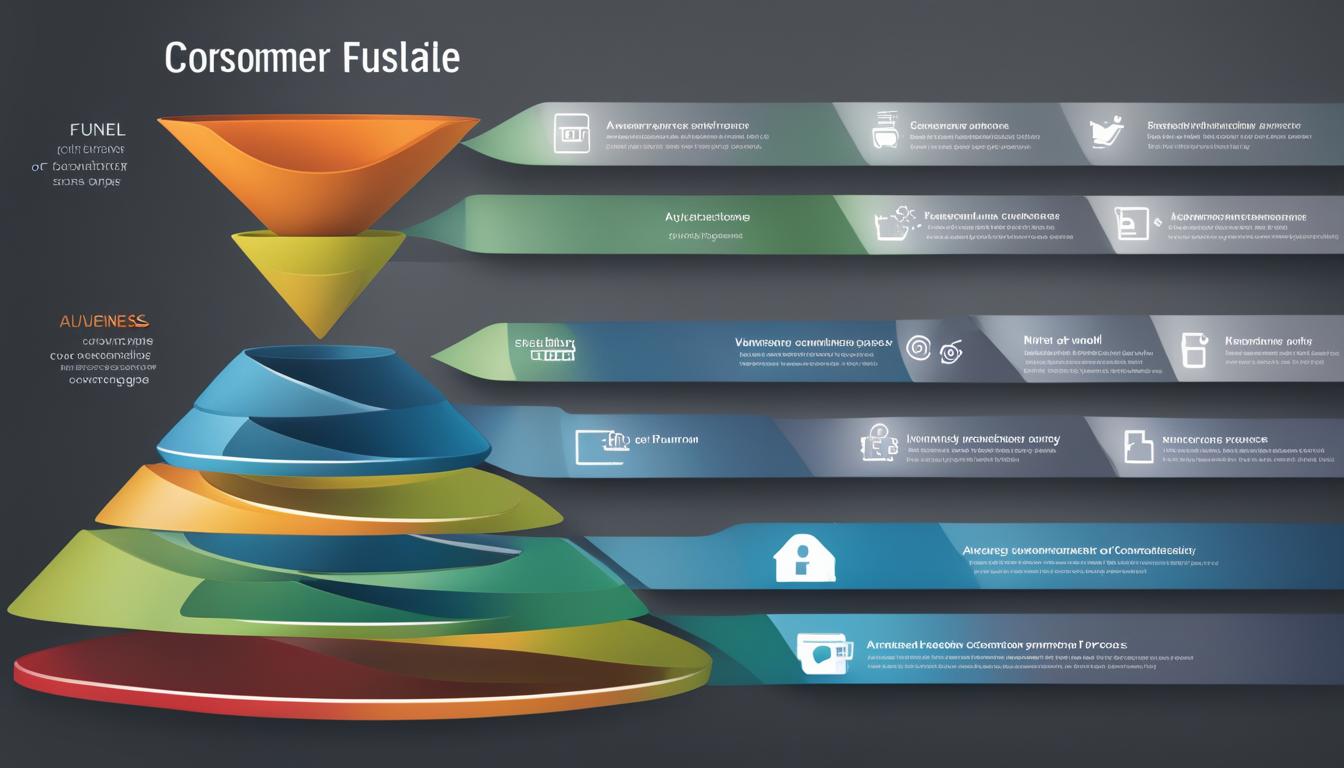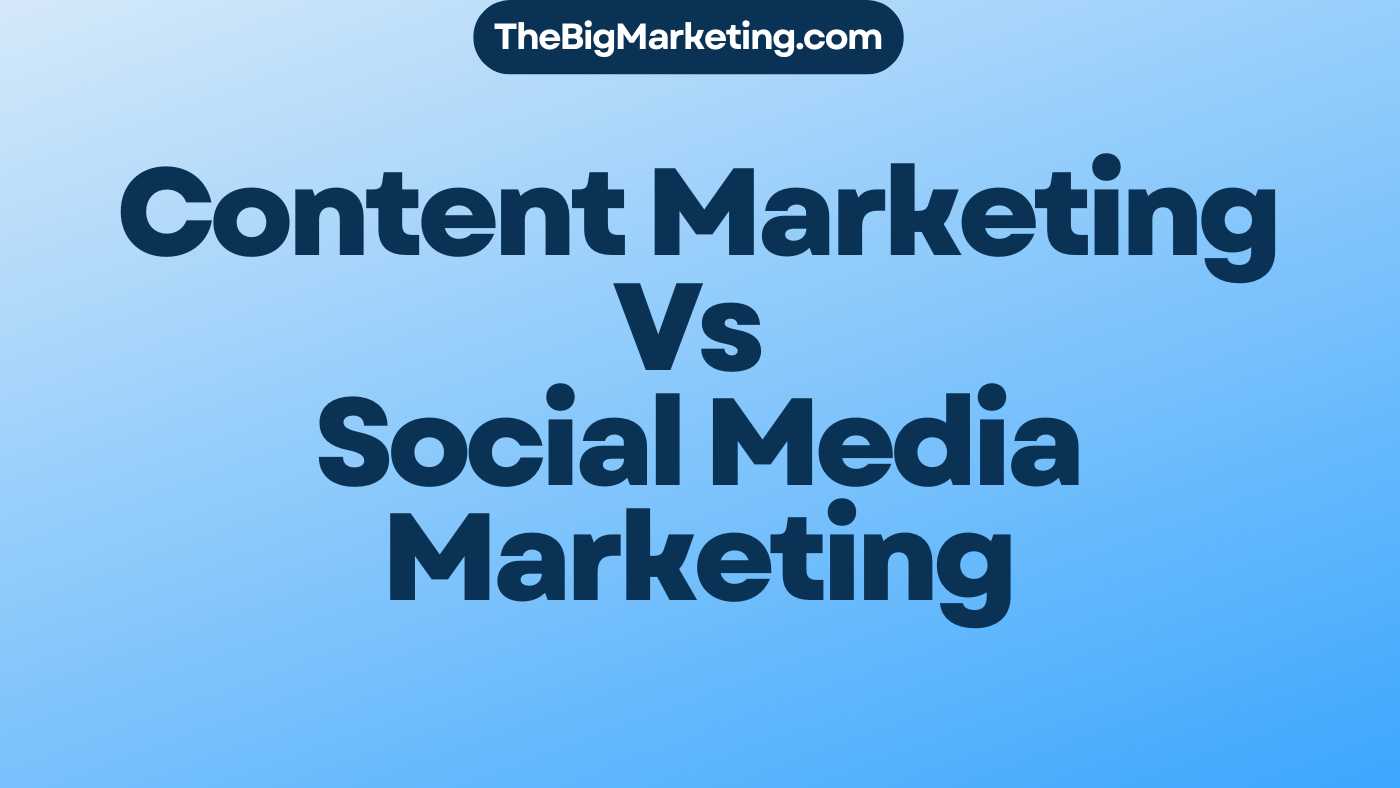Marketing Mail is a form of direct digital marketing that utilizes email to engage with a business’s audiences. It involves sending promotional or informational content to a list of subscribers. Email marketing allows marketers to build customer relationships, promote products or services, increase brand awareness, and drive sales. It is a cost-effective and efficient way to reach a large audience quickly. There are various types of marketing mail, including newsletters, offers, announcements, and event invitations. To launch successful marketing mail campaigns, it’s important to have a solid strategy, use personalized content, design visually appealing emails, and measure campaign performance.
Key Takeaways:
- Marketing Mail is a form of direct digital marketing that uses email to engage with audiences.
- Email marketing allows businesses to build customer relationships, promote products, increase brand awareness, and drive sales.
- Types of marketing mail include newsletters, offers, announcements, and event invitations.
- Successful marketing mail campaigns require a solid strategy, personalized content, visually appealing designs, and performance measurement.
- Marketing mail is a cost-effective and efficient way to reach a large audience quickly.
The Benefits of Marketing Mail
Marketing mail offers numerous benefits for businesses. It allows marketers to strengthen customer relationships, increase brand awareness, and drive sales. By utilizing marketing mail as a cost-effective marketing strategy, businesses can reach a wide audience and achieve their marketing objectives.
Improved Customer Relationships
Marketing mail provides a direct and personal way to communicate with customers. By sending tailored content and offers, businesses can engage customers, deliver relevant information, and keep their brand top-of-mind. This helps to foster strong customer relationships, ultimately leading to increased loyalty and repeat business.
Enhanced Brand Awareness
Sending marketing mail allows businesses to create brand awareness and establish themselves as industry leaders. By consistently delivering valuable content and promotions, businesses can capture the attention of their target audience and differentiate themselves from competitors. This helps to build brand recognition and trust among customers.
Increased Sales
Marketing mail is an effective tool for driving sales. By delivering compelling offers, discounts, and product updates directly to customers’ inboxes, businesses can encourage immediate action and prompt customers to make purchasing decisions. The personalized nature of marketing mail can also lead to higher conversion rates and increased sales revenue.
Cost-Effective Marketing
One of the key benefits of marketing mail is its cost-effectiveness. Compared to traditional marketing methods, such as print advertising or direct mail, email campaigns are significantly more affordable. The costs associated with design, production, and distribution are minimal, allowing businesses to allocate their marketing budget more efficiently and achieve a higher return on investment.
Personalized Content
Marketing mail enables businesses to personalize content based on customer preferences and behaviors. This level of personalization helps to create a more engaging and relevant experience for recipients, increasing the likelihood of a response or conversion. By leveraging customer data and segmentation, businesses can deliver tailored messages that resonate with their audience.
Visually Appealing Emails
The design of marketing mail plays a crucial role in capturing and retaining the attention of recipients. Visually appealing emails with eye-catching graphics, well-formatted text, and clear calls-to-action can significantly enhance the impact of marketing campaigns. Well-designed emails also contribute to a positive brand perception and can improve customer engagement.
| Benefits of Marketing Mail | Key Advantages |
|---|---|
| Improved customer relationships | Enhanced brand awareness |
| Increased sales | Cost-effective marketing |
| Personalized content | Visually appealing emails |
| Campaign performance measurement |
Campaign Performance Measurement
Measuring the performance of marketing mail campaigns is essential for optimizing future efforts. By tracking key metrics such as open rates, click-through rates, and conversions, businesses can gain valuable insights into the effectiveness of their email campaigns. These insights can help identify areas for improvement and inform strategies for better results in the future.
Overall, marketing mail offers a wide range of benefits for businesses looking to enhance their customer relationships, increase brand awareness, and drive sales. With its cost-effective nature, personalized content, visually appealing design, and effective campaign performance measurement, marketing mail continues to be a valuable tool in the digital marketing landscape.
Types of Marketing Mail
When it comes to connecting with audiences, businesses have a variety of options for marketing mail. Each type serves a different purpose and can be tailored to meet specific marketing objectives. Let’s explore some of the common types of marketing mail:
- Newsletters: Newsletters are a popular choice for businesses to provide regular updates, educational content, and industry insights to their subscribers. They can be a great way to keep customers informed and engaged with the brand.
- Offers: Sending offers or promotions via email is an effective way to inform customers about discounts, special deals, or new product launches. These emails can help drive sales and create a sense of urgency among recipients.
- Announcements: Announcement emails are used to introduce new products, services, or features to the audience. They can be a powerful tool for generating excitement and creating awareness about the latest offerings.
- Event Invitations: Event invitations are another type of marketing mail that aims to increase awareness and encourage recipients to attend an upcoming event. They can be used for product launches, webinars, conferences, and other occasions where businesses want to engage their target audience.
By utilizing these different types of marketing mail, businesses can effectively communicate their message, build customer relationships, and drive engagement.
Strategies for Successful Marketing Mail Campaigns
Launching successful marketing mail campaigns requires a well-defined marketing mail strategy. To begin, it’s crucial to define the target audience and understand their interests and needs. By tailoring the content to appeal to their specific preferences, businesses can significantly increase the chances of engagement and personalized content has been proven to be an effective way to achieve this.
To capture the attention of recipients, it’s essential to design visually appealing emails that use compelling visuals and a clear and concise call-to-action. The use of eye-catching images that align with the brand identity can help create an emotional connection with the audience and encourage them to take further action.
It’s equally important to prioritize email deliverability, ensuring that marketing mails are successfully reaching the recipients’ inboxes. To optimize deliverability, businesses should regularly monitor their sender reputation, use trusted email service providers, and comply with industry standards and best practices.
To gauge the effectiveness of marketing mail campaigns, campaign performance measurement is crucial. By tracking key metrics such as open rates, click-through rates, and conversion rates, businesses can gain valuable insights into the success of their campaigns and make data-driven decisions to improve future efforts.
Continuously analyzing the campaign results and making necessary adjustments based on the obtained insights is fundamental to achieving better results over time. By employing an iterative approach, businesses can maximize their marketing mail campaigns‘ success, continually improving their effectiveness and achieving the desired outcomes.
| Strategies for Successful Marketing Mail Campaigns |
|---|
| Define the target audience |
| Personalize content based on recipient preferences |
| Design visually appealing emails with compelling visuals |
| Include a clear and concise call-to-action |
| Optimize email deliverability |
| Track and measure campaign performance |
| Analyze results and make data-driven decisions for improvements |
Cost-Effective Marketing Mail Solutions
Businesses looking for cost-effective marketing mail solutions can consider options like USPS Every Door Direct Mail. This service allows for bulk mailing without the need for an annual fee or permit. Postal rates for USPS Every Door Direct Mail are lower than USPS Marketing Mail. However, it’s important to note that this service is for unaddressed mail delivered to every mailbox in an area, limiting the ability to target specific individuals or addresses.
Another option to explore is USPS Periodicals Class Mail, which offers specialized rates and services tailored to the needs of publishers and organizations distributing periodicals. This can be a cost-effective solution for businesses in industries such as publishing, media, or content distribution.
By leveraging these cost-effective marketing mail solutions provided by USPS, businesses can effectively reach a wide audience while optimizing their marketing budgets.
| Marketing Mail Solution | Description |
|---|---|
| USPS Every Door Direct Mail | Bulk mailing service without annual fees or permits, delivering unaddressed mail to every mailbox in an area. |
| USPS Periodicals Class Mail | Specialized rates and services for publishers and organizations distributing periodicals. |
Targeted Marketing Mail Best Practices
Targeted marketing mail is a powerful strategy that allows businesses to tailor their content to specific segments or individuals based on their preferences, behavior, or demographics. By delivering personalized messages that resonate with each segment, businesses can significantly increase the relevance and effectiveness of their marketing campaigns.
To implement targeted marketing mail best practices, businesses should start by gathering customer insights and customer data. By understanding their audience on a deeper level, businesses can make informed decisions about how to segment their customers effectively.
Segmentation is a key element of targeted marketing mail. It involves grouping customers with similar characteristics together to create more targeted campaigns. By segmenting their audience, businesses can create highly relevant and personalized messages that resonate with each group.
Another crucial aspect of targeted marketing mail is personalization. Businesses should create personalized content that speaks directly to the needs and interests of each segment. By taking the time to understand their customers’ preferences and tailoring their messaging accordingly, businesses can create a more engaging and impactful experience.
By implementing these best practices, businesses can achieve higher engagement and better results from their marketing mail campaigns. Targeted messaging that is timely, relevant, and personalized has been proven to drive customer satisfaction, loyalty, and ultimately, increased conversions.
Benefits of Targeted Marketing Mail:
- Improved customer engagement
- Higher conversion rates
- Increased customer satisfaction
- Enhanced brand loyalty
- Greater ROI on marketing investments
By utilizing targeted marketing mail best practices, businesses can unlock the full potential of their customer data, deliver personalized content, and create more meaningful connections with their audience.
| Targeted Marketing Mail Best Practices | Benefits |
|---|---|
| Gather customer insights and data | Improved customer engagement |
| Segment your audience effectively | Higher conversion rates |
| Create personalized content | Increased customer satisfaction |
| Deliver timely and relevant messages | Enhanced brand loyalty |
| Drive customer conversions | Greater ROI on marketing investments |
Key Elements of a Successful Marketing Mail Strategy
A successful marketing mail strategy involves several key elements that contribute to the effectiveness and impact of your email campaigns. These elements include:
Defining Your Target Audience and Goals
In order to create a targeted and personalized marketing mail campaign, it’s important to define your target audience and understand their preferences, behavior, and demographics. This will help you tailor your content and messaging to resonate with your target audience. Additionally, setting clear goals for your marketing mail campaigns will help guide your strategy and measure success.
Building an Email Contact List
Building a high-quality email contact list is crucial for the success of your marketing mail campaigns. It’s important to obtain permission from subscribers who have willingly opted in to receive email communication from your business. This ensures that your emails are reaching a receptive audience who is more likely to engage with your content.
Choosing the Right Email Campaign Types
There are different types of email campaigns that you can utilize based on your marketing goals and the message you want to convey. Whether it’s newsletters, offers, announcements, or event invitations, understanding the different email campaign types will help you deliver your intended message effectively.
Including a Clear Call-to-Action
A clear call-to-action (CTA) is a vital component of an effective marketing mail campaign. Your CTA should be compelling, easily understood, and encourage recipients to take the desired action, such as making a purchase, signing up for an event, or downloading a resource. Including a prominent CTA in each email will drive engagement and conversions.
Designing Engaging Email Content and Cross-Device Compatibility
The design of your marketing mail plays a significant role in capturing your audience’s attention and encouraging interaction. Use visually appealing elements, such as compelling images and graphics, to enhance the overall look and feel of your emails. Additionally, ensure that your emails are designed to be mobile-friendly and compatible across different devices, as an increasing number of users access their emails on smartphones and tablets.
Timing Your Email Campaigns Strategically
Timing is crucial in email marketing. You want to send your marketing mail at a time when your audience is most likely to engage with it. This could vary depending on factors such as industry, target audience, and geographical location. Analyze past campaign data and use email automation tools to optimize the timing of your email sends.
Measuring and Analyzing Campaign Performance
Measuring and analyzing the performance of your marketing mail campaigns is essential for understanding their effectiveness and making data-driven decisions for future campaigns. Track key metrics such as open rates, click-through rates, conversions, and unsubscribe rates to gain insights into the impact of your emails. Use these insights to refine your strategy and improve campaign performance.
Implementing these key elements in your marketing mail strategy will help you create engaging, targeted, and successful email campaigns that effectively reach and resonate with your audience.
Email Marketing Statistics and Trends
Email marketing continues to be a powerful and effective channel for businesses, driving customer engagement and delivering impressive ROI. Let’s take a look at some key email marketing statistics and trends shaping the industry:
Email Marketing ROI:
Email marketing delivers an impressive return on investment (ROI), with an average ROI of $42 for every $1 spent. This makes it one of the most cost-effective marketing strategies available.
Email Users Worldwide:
The number of email users worldwide is expected to reach 4.6 billion by 2025. With such a vast user base, email marketing provides businesses with an extensive reach and the potential to connect with a global audience.
Personalization Drives Results:
Personalized emails have a significant impact on engagement and conversion rates. Emails with personalized subject lines are 26% more likely to be opened, and personalized content within the email can lead to higher click-through rates and increased customer engagement.
Mobile Optimization:
Mobile optimization is crucial for email marketing success, as 54% of emails are opened on mobile devices. Businesses must ensure that their emails are responsive and visually appealing across various screen sizes, ensuring a seamless user experience.
Automated Email Workflows:
Automated email workflows streamline marketing efforts, providing businesses with targeted and timely communication. Triggered emails have a 70.5% higher open rate and a 152% higher click-through rate compared to traditional emails, making them a valuable tool for nurturing leads and driving conversions.
| Email Marketing Statistics | Data |
|---|---|
| Email Marketing ROI | $42 for every $1 spent |
| Email Users Worldwide | 4.6 billion (by 2025) |
| Personalization Impact | 26% higher open rates |
| Mobile Optimization | 54% of emails opened on mobile |
| Automated Email Workflows | 70.5% higher open rates, 152% higher click-through rates |
As the digital landscape continues to evolve, businesses must stay up-to-date with the latest email marketing trends and leverage these insights to optimize their campaigns. By incorporating personalization, mobile optimization, and leveraging automation, businesses can tap into the full potential of email marketing and achieve remarkable results.
Best Practices for Effective Email Marketing
Implementing best practices for effective email marketing can significantly improve campaign success. By incorporating these email marketing best practices, businesses can create engaging and effective email marketing campaigns that drive customer engagement and achieve desired results.
Craft Engaging Subject Lines
Engaging subject lines play a crucial role in increasing email open rates. By creating compelling subject lines that capture the recipients’ attention and generate curiosity, businesses can entice subscribers to open their emails and explore the content within.
Personalize Content Based on Recipient Data
Personalized content creates a sense of relevance and helps establish a connection with the recipients. By leveraging recipient data such as name, preferences, and past interactions, businesses can tailor their email content to resonate with each individual and increase customer engagement.
Design Mobile-Friendly and Visually Appealing Emails
In today’s mobile-first world, it is crucial to design emails that are mobile-friendly and visually appealing across different devices and screen sizes. Utilizing responsive email design and incorporating visually captivating elements, such as images and clean layouts, can enhance the overall user experience and increase engagement.
Include Clear and Compelling Call-to-Action
A clear call-to-action guides recipients on what action to take after reading the email. Whether it’s directing them to make a purchase, sign up for a webinar, or download a whitepaper, including a prominent and compelling call-to-action can drive conversions and desired outcomes.
Segment the Audience to Deliver Targeted Messages
Segmentation allows businesses to group subscribers based on specific criteria such as demographics, behavior, or past purchases. By segmenting the audience, marketers can deliver targeted messages that address the unique needs and interests of each segment, increasing the relevance and effectiveness of the email campaigns.
Utilize Automation to Streamline and Optimize Email Campaigns
Automation can save time and streamline email marketing efforts by automating processes such as welcome emails, abandoned cart reminders, or personalized customer journeys. By utilizing automation tools, businesses can deliver timely and relevant emails, nurture leads, and optimize their email campaigns based on valuable data and insights.
Implementing these email marketing best practices can help businesses create engaging, personalized, and highly effective email campaigns, resulting in increased customer engagement, improved conversions, and a stronger return on investment.
Advantages and Disadvantages of Email Marketing
Email marketing offers several advantages for businesses, making it a powerful tool in their marketing arsenal. One of the key advantages is the ability to have direct communication with customers. Through email campaigns, businesses can reach their target audience directly in their inbox, delivering personalized and relevant messages.
Another advantage of email marketing is ownership of the channel. Unlike social media platforms or search engines, where algorithms and policies can change at any time, businesses have full control over their email marketing list and can communicate with their subscribers whenever they want.
The ability to collect and analyze valuable customer data is also a major advantage of email marketing. By tracking email open rates, click-through rates, and conversion rates, businesses can gain insights into customer preferences and behavior. This data can then be used to refine marketing strategies and improve campaign performance.
However, there are also some disadvantages to consider. One potential drawback is the potential for emails to be labeled as spam. With the increasing volume of email marketing campaigns, it’s important for businesses to follow best practices, such as obtaining permission from recipients and providing value-added content, to avoid being marked as spam by email service providers or recipients.
Another challenge is deliverability. Email deliverability refers to the ability of an email to reach the recipient’s inbox. Factors such as spam filters, email authentication, and reputation management can affect deliverability rates. It’s crucial for businesses to maintain a good sender reputation and regularly monitor deliverability metrics to ensure their emails are reaching their intended audience.
| Advantages of Email Marketing | Disadvantages of Email Marketing |
|---|---|
| Direct communication with customers | Potential for emails to be labeled as spam |
| Ownership of the channel | Deliverability challenges |
| Ability to collect and analyze valuable customer data |
Conclusion
Email marketing remains a powerful and effective tool for businesses. Through personalized content, segmenting audiences, and implementing automation, businesses can maximize the impact of their email campaigns. By following best practices such as engaging subject lines, clear call-to-actions, and adopting a mobile-friendly design, the effectiveness of email marketing can be enhanced. While challenges and potential drawbacks exist, businesses can overcome them by delivering value to customers and adhering to email regulations. As technology continues to evolve, email marketing will remain a cost-effective and valuable channel for businesses to engage with their audiences and achieve marketing success.






